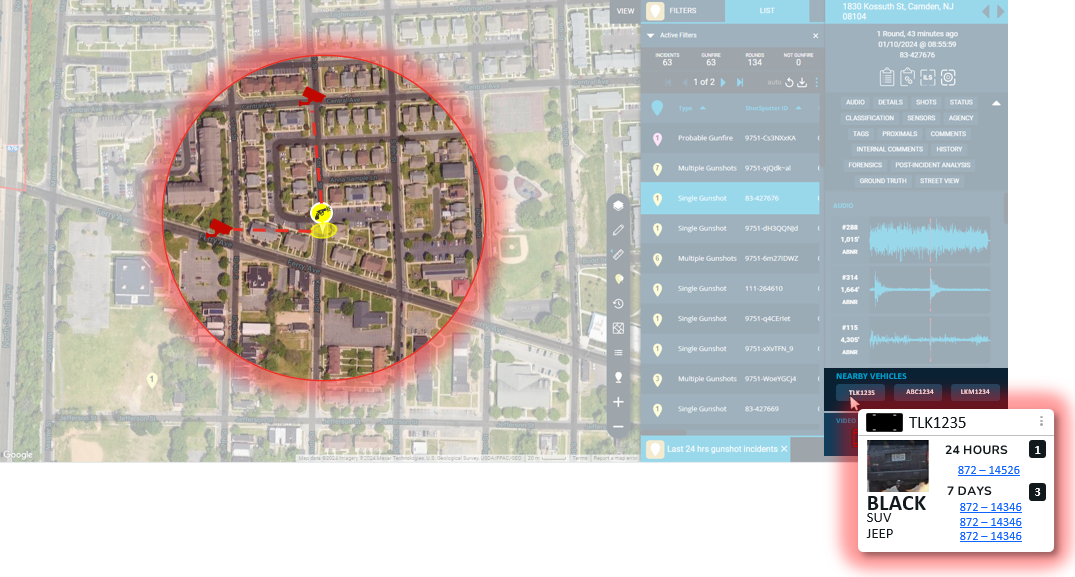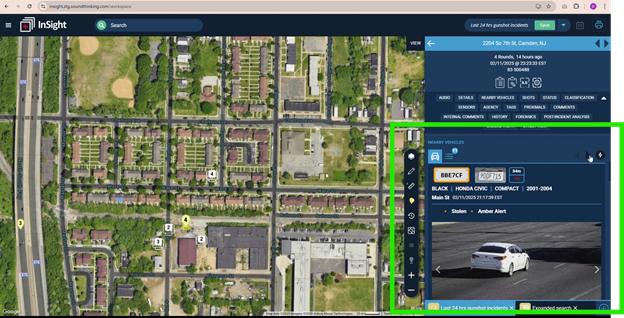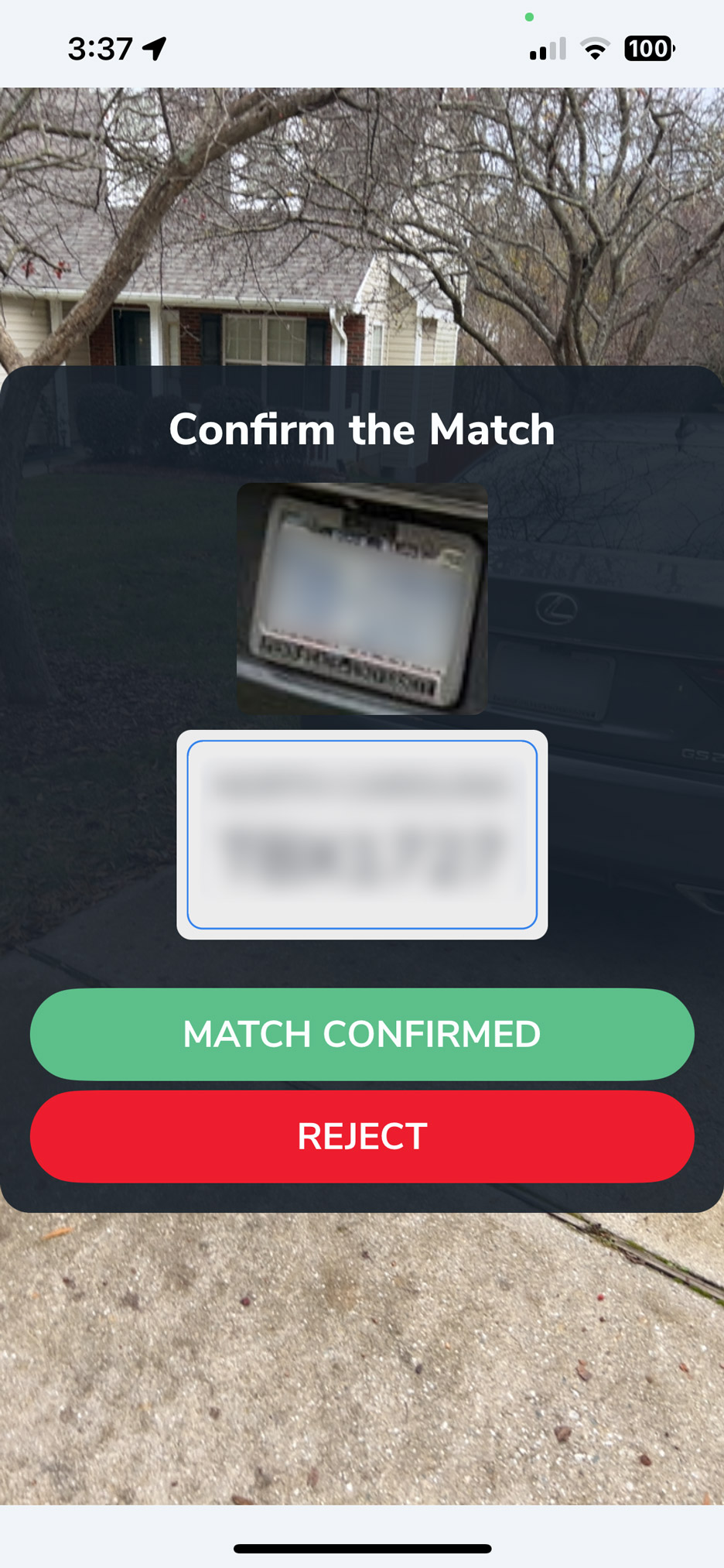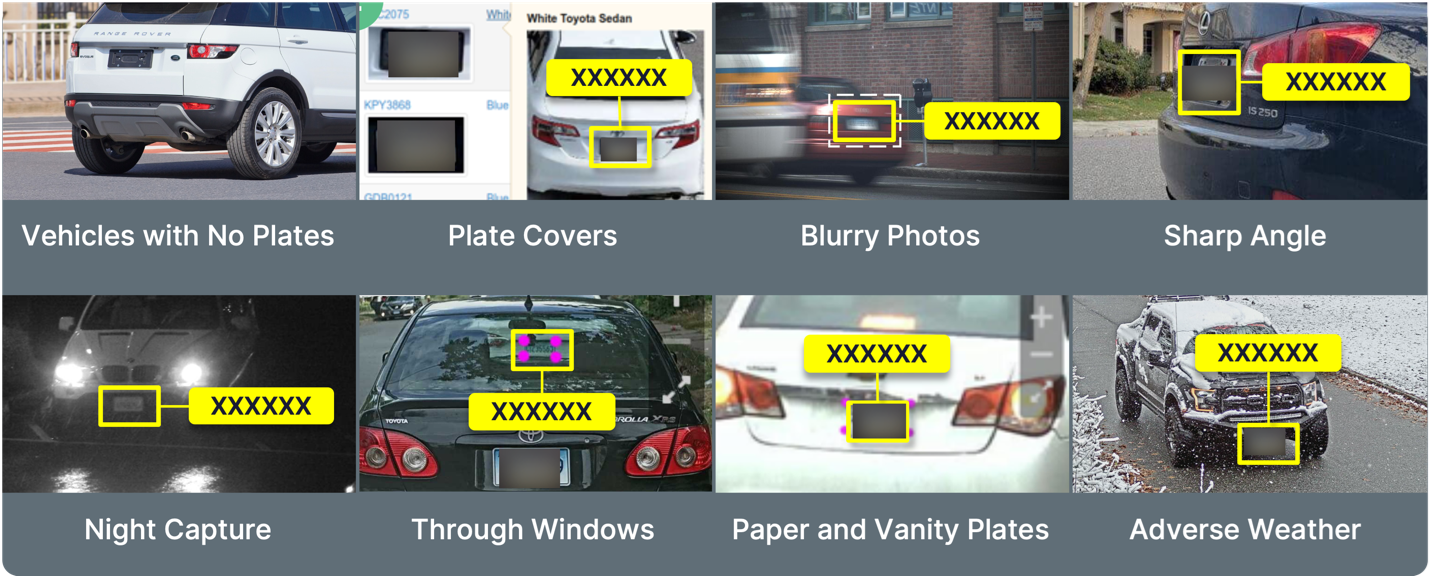Automated License Plate Recognition (ALPR) technology has become a critical tool for law enforcement agencies, enhancing their ability to detect, investigate, and even help prevent crimes. ALPR systems provide real-time data that significantly improves operational efficiency and public safety by automatically capturing and analyzing license plate information. Choosing an ALPR solution best suited for law enforcement requires different considerations.
Not all ALPR systems are created equal. Law enforcement agencies need a reliable, accurate, cost-effective solution that can be integrated with other solutions, providing suspect vehicles and other investigative help while optimizing resources. Here are five key reasons why police agencies should implement ALPR technology—and why PlateRanger is the best choice.
1. Data Network
PlateRanger’s ALPR data can be shared with other agencies as part of the nationwide Rekor Public Safety Network (RPSN). Integrating PlateRanger license plate data with the RPSN network of approximately 250 agencies gives you access to license plate and vehicle data across several jurisdictions. Combine that data with CrimeTracer, which has records from over 2500 agencies, and the possibilities for investigative leads expand through link analysis through over 1 billion cross-jurisdictional records. And adding in ShotSpotter data from the network of approximately 175 US agencies can increase the number of links found on license plates.
By querying license plate data through multiple databases, such as RPSN and CrimeTracer, investigators can quickly uncover connections between vehicles, suspects, and incidents that might otherwise remain hidden. This accelerates investigations by identifying suspect vehicles, locations, and known associates across jurisdictions. The ability to rapidly access and analyze this vast pool of data eliminates investigative silos, reduces time spent on manual information gathering, and allows law enforcement to act on actionable intelligence faster—significantly improving clearance rates and enhancing officer and community safety.
2. Improved Investigative Capabilities
Investigations often hinge on vehicle data, yet many traditional ALPR systems rely only on in-vehicle and fixed locations, limiting officers’ ability to gather critical leads in the field. Additionally, some systems fail to provide vehicle make and model information, which can be instrumental in linking suspect vehicles to a crime pattern. Outdated data storage and retrieval systems can further impede investigations, making it difficult to track suspects and their associated vehicles.
PlateRanger overcomes these limitations with real-time, on-the-go scanning. Officers can capture and analyze vehicle data from any location using the PlateRanger Rekor Blue app on their mobile phones, ensuring they can capture license plate data near incidents, including any associated vehicles that may be instrumental in solving the case. PlateRanger also identifies vehicles by make, model, and color, allowing queries to find matching vehicles, even if a witness did not see a license plate. And with advanced analytics, PlateRanger can identify patterns and trends among vehicles that commonly travel together, making investigative connections in criminal activity. PlateRanger’s advanced analytics can uncover gang-affiliated vehicles through Convoy Analysis or note vehicles seen multiple times in the same location with Common Vehicle Analysis.
3. Integration with Other Technologies

PlateRanger integration with ShotSpotter.
Modern policing requires seamless integration between investigative tools and data-sharing platforms. However, many ALPR systems operate in silos, making it difficult for law enforcement agencies to leverage data effectively across multiple systems. PlateRanger is built with OpenAPI that integrates in near real time effortlessly with many other public safety solutions like Real-Time Crime Centers (RTCCs), Computer-Aided Dispatch (CAD) systems, Records Management Systems (RMS), and Digital Evidence Management Systems (DEMS).
The system seamlessly integrates with law enforcement databases like CrimeTracer and ShotSpotter, allowing agencies to cross-reference historical plate reads, identify suspect vehicle patterns,
and track movements over time. With CrimeTracer integration, the data search is augmented by layering ALPR, RMS, and other data to provide investigative links. Officers can correlate license plate reads with crime patterns and gunfire incidents and connect vehicles to suspects and previous crimes, streamlining the investigative process and providing prosecutors with critical evidence for convictions.
4. Accuracy of License Plate Reads
The accuracy of license plate recognition is critical in law enforcement. False positives or unreadable plates can lead to wasted resources and missed opportunities. Many ALPR systems struggle in diverse environments, such as poor lighting, inclement weather, or high-speed traffic conditions, which can compromise the reliability of plate reads.
PlateRanger solves this challenge with AI-driven technology rather than Optical Character Recognition (OCR), which ensures high precision in all adverse weather conditions. Maintaining high-accuracy rates with plate reads improves investigative capability through more suspect vehicle leads and vehicle information for potential witnesses. Using AI to include more data with video clips, PlateRanger stitches together multiple high-resolution images, making the video detailed and sharp to gather as much data about the vehicle as possible. PlateRanger will also identify and store all possible alternatives, ensuring no vehicle is missed when searching for suspect vehicles, even when the 8s are mistaken for Bs.

5. Compliance with Legal and Privacy Standards
Concerns about ALPR data privacy and potential misuse have led to stricter regulations, and ALPR systems must comply with evolving legal standards while maintaining operational effectiveness. PlateRanger provides a secure and transparent solution that meets regulatory standards while safeguarding sensitive data by implementing configurable privacy settings.
PlateRanger is CJIS-compliant and adheres to strict data retention and privacy policies. Agencies can customize data retention settings to align with legal requirements, ensuring responsible storage and access control. Additionally, PlateRanger settings allow agencies to require a search justification for each license plate search. The system administrator can track license plate searches and thoroughly audit a user’s actions.
Why PlateRanger is the Best ALPR Solution for Police Agencies
ALPR technology is no longer a luxury—it’s a necessity for modern policing. PlateRanger revolutionizes license plate recognition by providing a cost-effective, highly accurate solution that integrates with other systems, bolsters investigations, and optimizes staff resources with the Rekor Blue smartphone app.
With AI-driven precision, the ability to query billions of records through data networks, seamless integration capabilities, and compliance with legal and privacy standards, PlateRanger drives efficient, effective, and equitable public safety outcomes. With a scalable solution that allows agencies to ingest existing license plate readers, integrate with existing and new systems to maximize resources and find investigative connections and leads, and the ability to use smartphones in the field, PlateRanger is the superior choice for agencies seeking an efficient and adaptable ALPR solution.




